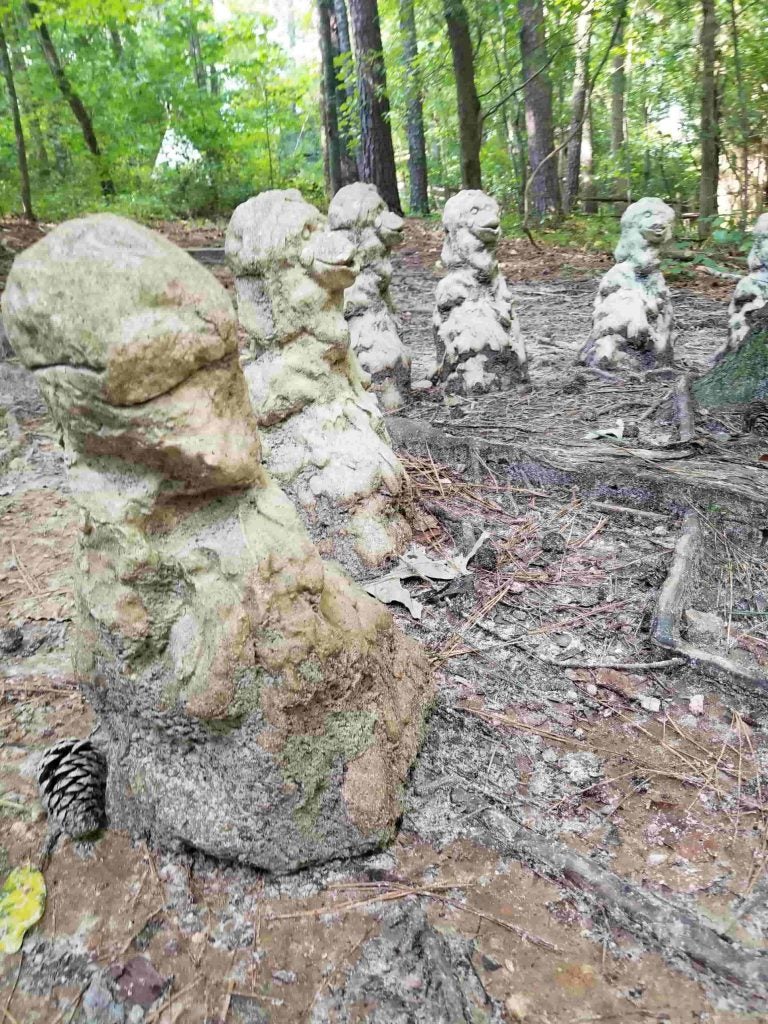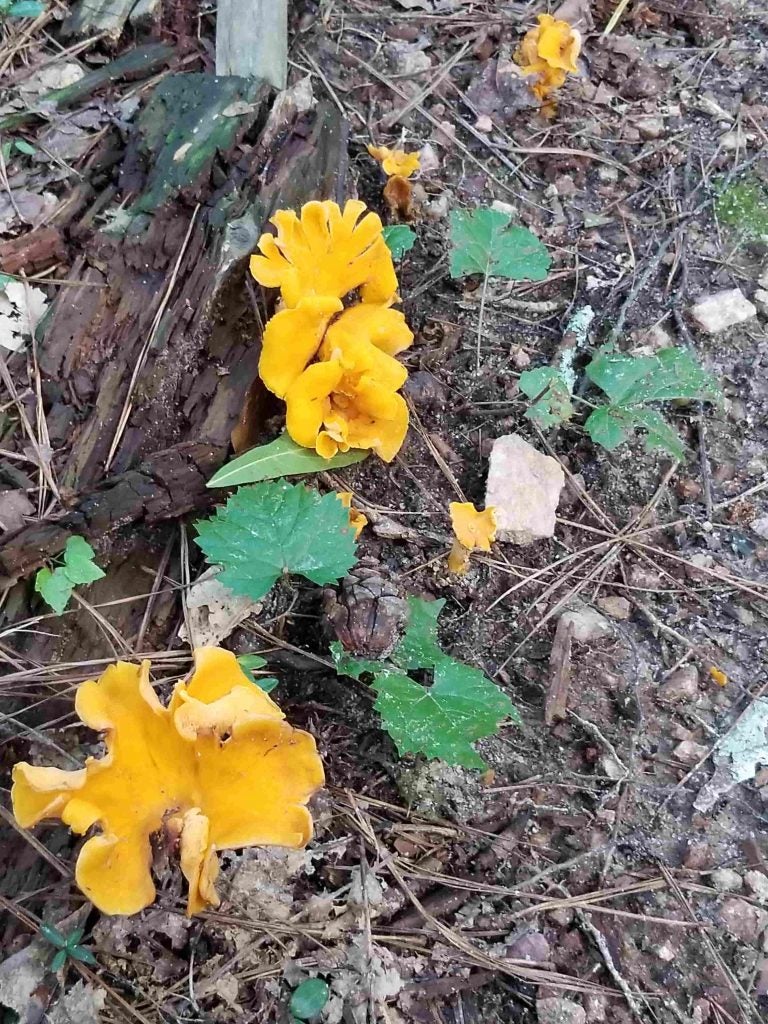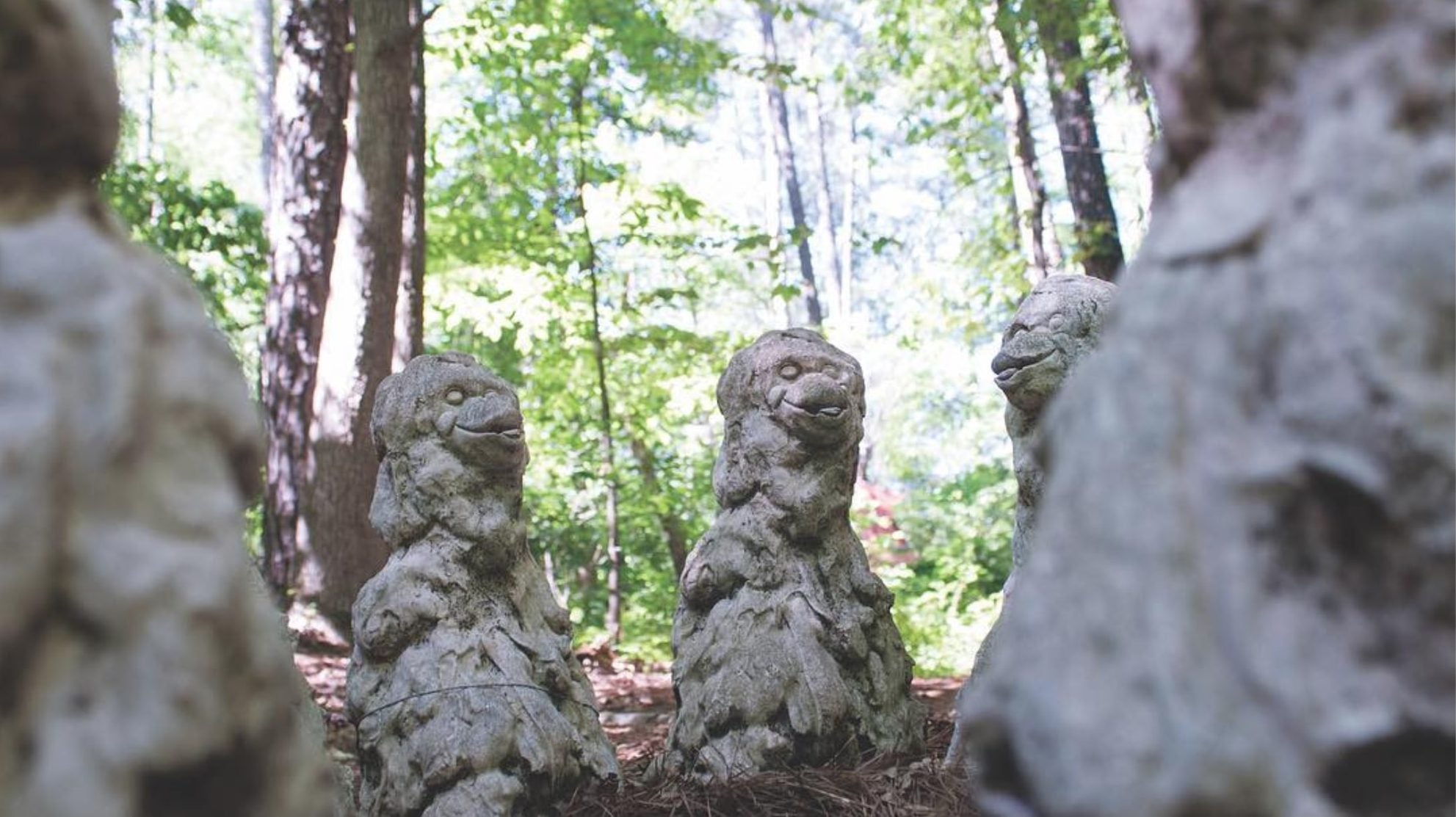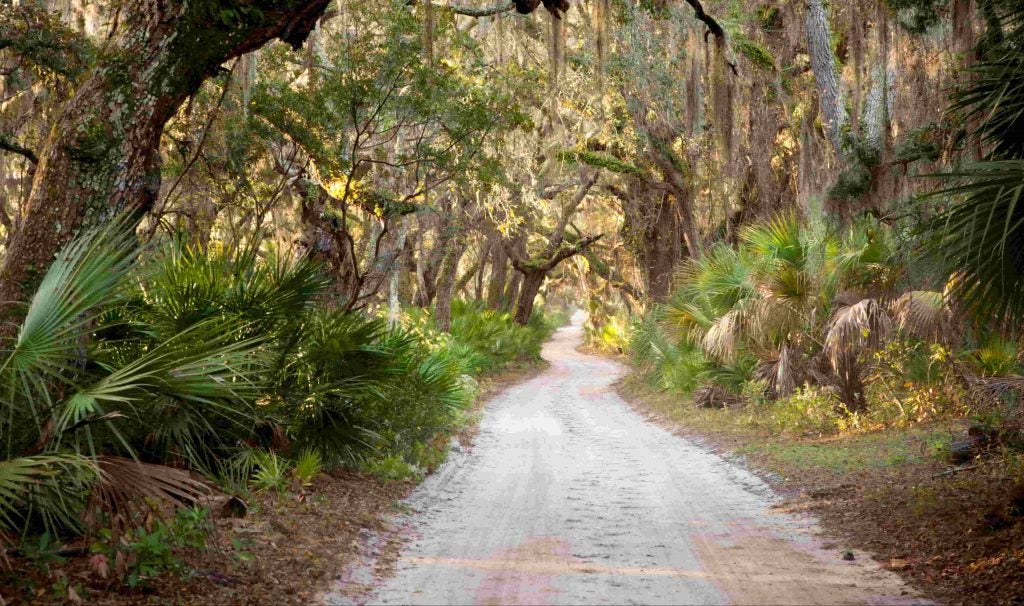A Georgia writer stumbles upon some mysterious graves from a local “Monkey Massacre” along a trail near her home.
I needed to get away. But I didn’t have the time to go anywhere far. Even with the freedom of being a freelancer, I can’t just leave my clients hanging mid-day on a Tuesday. So I left my house and drove to a nearby trail, about three miles away.
At the time, I thought it would be a quick jaunt among wildflowers so I could come back to my work refreshed by the forest.
I thought it would be ordinary.
I pulled up to the Autrey Mill Nature Preserve, checked the map, and decided the Forest Trail would be my fated path for the day. It was everything I was looking for; a short 2.5 miles, just enough to reset, shaded by hardwoods and marked by historic sites like what’s left of the foundation of an old mill. I started out, and soon stumbled on another piece of history so bizarre it stays with me to this day.
The stumbling was literal. As I rounded a bend, some beautiful Omphalotus illudens — also known as Jack-O-Lantern mushrooms — caught my attention. I was admiring a beaconing orange cluster on the edge of the path when I tripped. Whatever it was caught me right at mid-calf and hurt like hell. The culprit was the last thing I expected to find on a trail.
It was the strangely joyful face of a tiny monkey statue. In fact there was a whole troop of them, all surrounding a hardwood.

Monkey Statues on the Forest Trail, Audrey Mill Nature Preserve. Image from Madelyn Ottem
It freaked me out. There was no card of explanation, like the ones the park usually put around significant sites, creeks, and plant life. I couldn’t tell what to make of them, but I knew they were creepy. Their bodies were slightly malformed, but their faces were distinctly monkey, each with a little smile of mockery. I finished my hike, and felt mostly refreshed when I returned to work—but those disturbing monkeys stayed on my back.
Turns out, those monkeys weren’t just statues, but graves.
The Monkey Massacre, Remembered
In the early 1900s, right in my tiny metro Atlanta pocket community, a circus train turned over. According to the lore, the monkeys escaped and occupied the surrounding forest. The farmers of Johns Creek, who had never seen monkeys before, were alarmed and responded to the unknown beasts with violence. They grabbed their guns and shot every one of them out of the trees. The event would come to be known as “The Monkey Massacre.”
Today, those little monkey statues are known to move about, and reappear in different formations along the Forest Trail. Those “graves” are not literal tombstones, but pieces of public art placed by an unknown artist decades ago. The artist’s intention was to remind people that the unknown should not be feared.
View this post on Instagram
For Mary Winder, the Autrey Mill Nature Preserve Executive Director, the symbolism of the monkey graves is an important element of the park, despite the Monkey Massacre’s dark history.
“The folktale of the monkeys tie so beautifully into our mission,” she said. “To create a destination and education resource to inspire exploration, appreciation, and preservation of the natural environment and local history.”
My experience with the monkeys taught me a separate lesson as well: that there are unknown things, some scary, thought-provoking things, that are just steps outside my front door. In this case, I didn’t need to set off for unknown land. Exploring my own backyard came with an unexpected twist. My home may be less familiar than I thought.
Every time I go back to Autrey Mill, I never know when or where I’ll meet the monkeys, and be reminded that the unknown is not my enemy. And isn’t that idea at the heart of exploration?
“Of course you won’t recognize every animal you see in nature, but you should always respect it,” Winder said. “The folktale inspires exploration and curiosity for our past.”
When we come across–or trip over–something bizarre, scary, or downright horrific, it can be the catalyst to learning more about history and hometowns. It can lead to a questioning of past behavior and how we can do better for the future. After all, the site of the Monkey Massacre eventually became a revered community nature preserve; a haven where I can take my family for a local commune with nature.

Omphalotus illudens, or Jack-O-Lantern Mushrooms. Image from Madelyn Ottem
As far as how the monkeys mysteriously move about the trail, some say they’re haunted. Others assume they’re moved by mischievous hikers.
Tent and RV campers can witness the monkey massacre monument for themselves by camping at Stone Mountain Park Campground or Shady Grove Campground at Lake Lenier, and making a day trip out to Autrey Mill Nature Preserve.
The Dyrt is the only camping app with all of the public and private campgrounds, RV parks, and free camping locations in the United States. Download now for iOS and Android.Popular Articles:
Articles on The Dyrt Magazine may contain links to affiliate websites. The Dyrt receives an affiliate commission for any purchases made by using such links at no additional cost to you the consumer.



